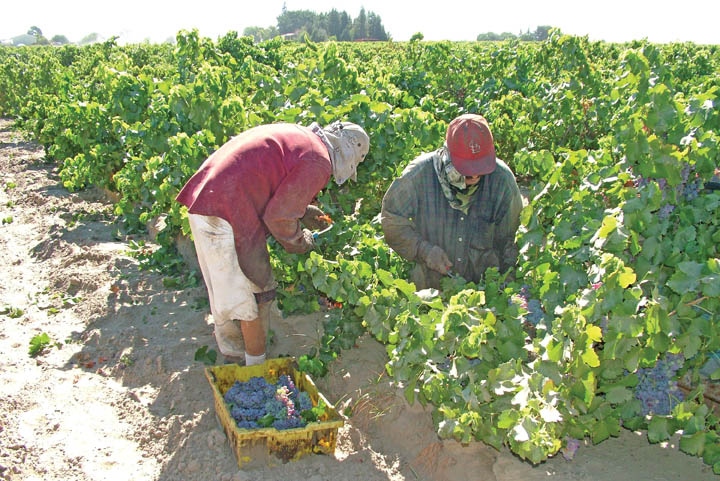
Labor is a pressing issue for wine grape growers, and there are indications that the issue will heat up as harvest approaches.
Craig Ledbetter, a partner in Vino Farms, which grows a wide range of red and white wine grapes on more than 11,000 acres in the Central and North Coast regions as well as inland in Sacramento, San Joaquin and Yolo counties, says he has seen the labor supply slowly erode this season.
Ledbetter describes the size of the 2012 crop in the central valley counties as about normal, based on bunch counts. “What I’m seeing is an average crop, maybe a little bigger, maybe a little smaller depending on location,” he says. “Overall, the Chardonnay looks decent and it’s the same for Cabernet Sauvignon. The crop hanging on the Zinfandel vines is pretty average, too. I don’t see a bumper crop for any variety across the board this year.”
“We had plenty of people early this season for pruning,” he says. “But, later in the spring we were down about 40 percent of the number we needed. The shortage caught everyone by surprise. I keep hearing that an improved economy in Mexico is keeping some workers at home. Also, of course, it’s very difficult to cross the border these days.”
As a result he’s falling behind in his field work. “The later it gets and the more growth on the vines the harder it is to get the job done,” Ledbetter says. “It’s much easier to thin shoots when they’re just 8 to 10 inches long than when they’ve grown to 18 to 24 inches in length.”
The labor shortage will not likely affect his harvest. Ninety percent of his grapes are machine-harvested. However, growers who handpick may be in trouble. “If you’re expecting 25 to 30 workers to show up and only 10 to 15 actually do, you might not finish picking your first load until around 1 or 2 in the afternoon,” Ledbetter says. “If that’s the case, you won’t get a second load in that day. This labor shortage is something we have to deal with,” he says. “We need a real guest-worker program that works.”
About the Author(s)
You May Also Like




